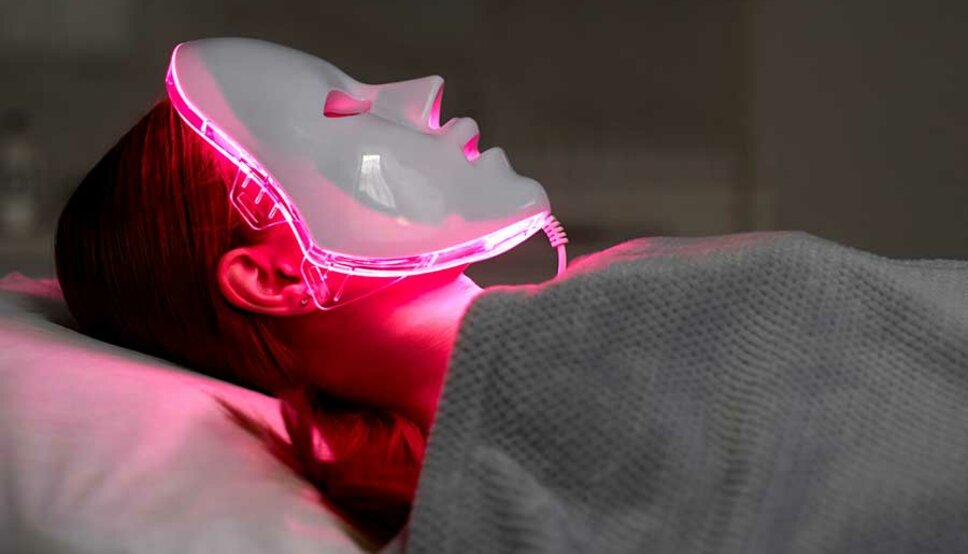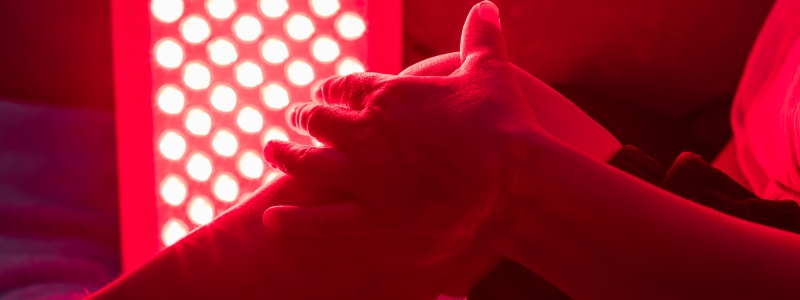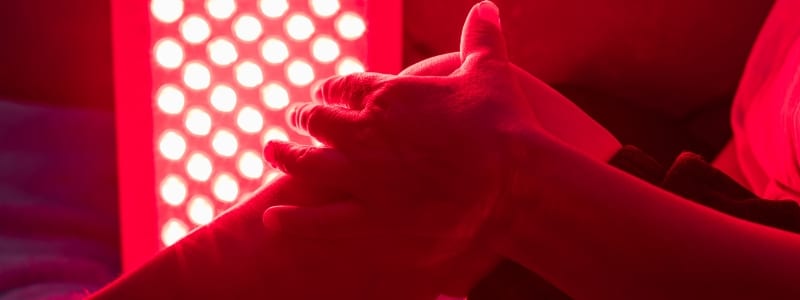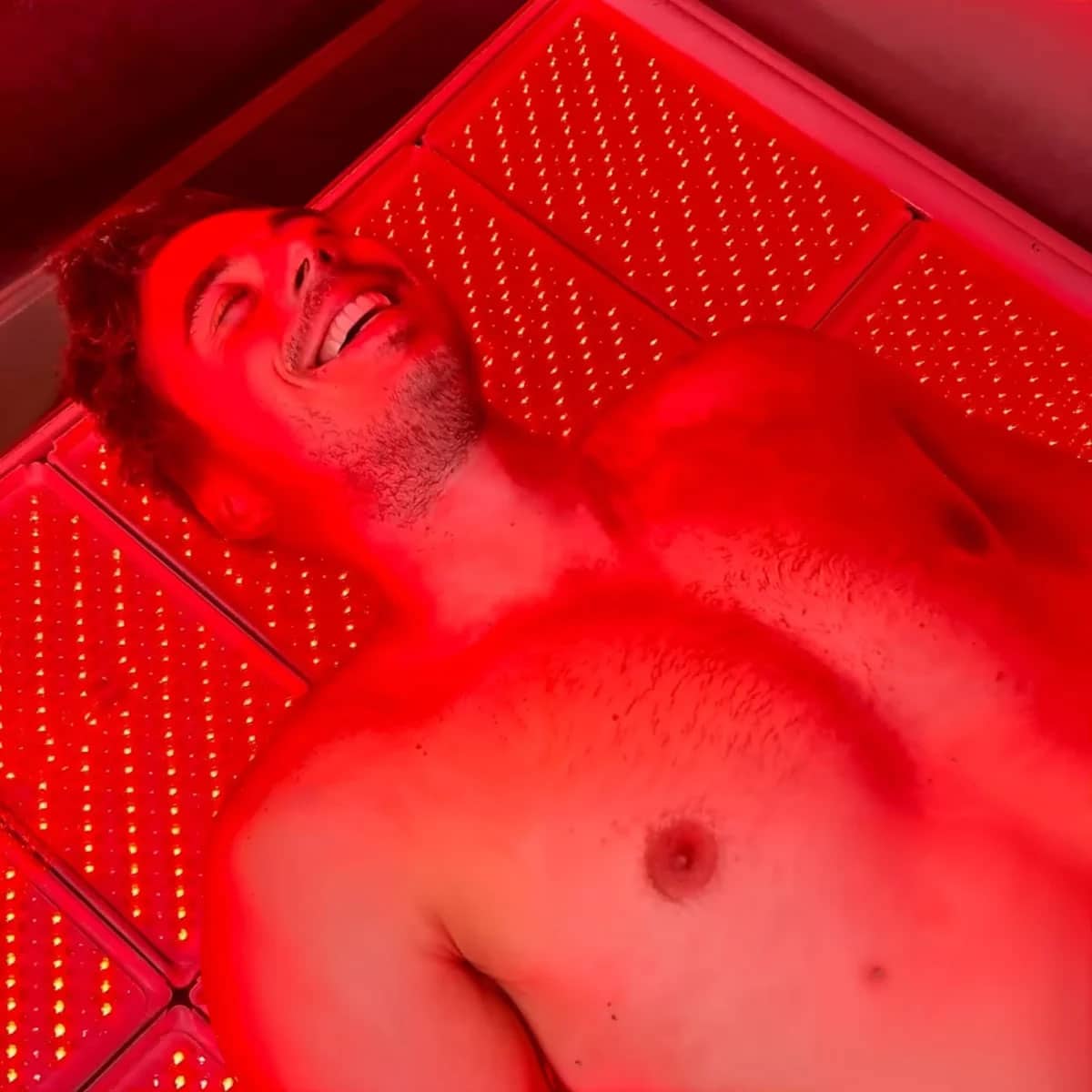Red light therapy has gained significant attention for its numerous health benefits. This innovative treatment harnesses the power of specific wavelengths of light to promote healing, enhance skin health, and relieve pain. As technology evolves, so does our understanding of how red light therapy can improve muscle recovery, boost mood, and even aid in hair growth. By exploring its functions and advantages, we can uncover the potential of red light therapy to transform our overall well-being.
Introduction to Red Light Therapy
Red light therapy (RLT) is an innovative treatment method that utilizes specific wavelengths of red and near-infrared light. This therapy has gained popularity in recent years due to its wide-ranging applications and potential health benefits. By targeting cellular function, red light therapy promotes healing and rejuvenation in various tissues.
Key Characteristics of Red Light Therapy:
- Wavelengths: RLT typically uses wavelengths between 600 to 900 nanometers, which effectively penetrate the skin.
- Non-Invasive: The therapy is non-invasive, making it a comfortable option for those seeking alternative healing methods.
- Accessibility: With devices available for both clinical and home use, RLT has become more accessible than ever.
Benefits of Red Light Therapy:
- Skin Health: It enhances collagen production, leading to improved skin elasticity and reduced wrinkles.
- Pain Relief: RLT effectively manages pain associated with inflammation and injuries by promoting circulation.
- Energy Production: RLT stimulates ATP production in cells, improving energy levels.
In summary, red light therapy stands out as a versatile tool in modern health and wellness. As scientific research continues to expand our understanding of its mechanisms, more individuals are likely to explore the numerous advantages that red light therapy can offer.

How Red Light Therapy Works
Red light therapy harnesses specific wavelengths of light, typically between 600 to 650 nanometers, which penetrate the skin and are absorbed by the body’s cells. This process triggers numerous biological responses that contribute to various health benefits. Here’s a brief overview of how red light therapy works:
- Cellular Absorption: The mitochondria, known as the powerhouse of the cell, absorb the red light. This absorption stimulates ATP (adenosine triphosphate) production, which provides energy to cells for optimal functioning.
- Increased Blood Flow: Red light therapy promotes vasodilation, allowing more blood to flow to treated areas. Enhanced circulation delivers essential nutrients and oxygen while facilitating the removal of toxins.
- Reduction of Inflammation: By modulating the immune response, red light therapy can significantly decrease inflammation. This helps reduce pain and promotes healing in affected tissues.
- Collagen Production: Red light stimulates fibroblast activity, leading to increased collagen synthesis, which is vital for skin health and rejuvenation.
In summary, red light therapy works by energizing cells, enhancing blood circulation, and promoting healing processes. These mechanisms contribute to its effectiveness in skin health, pain relief, and more, making red light therapy a versatile option for various therapeutic applications.
Benefits for Skin Health
Red light therapy has garnered attention for its remarkable benefits for skin health. This non-invasive treatment utilizes specific wavelengths of light to rejuvenate the skin, promoting various cosmetic and therapeutic effects. Here are some key ways red light therapy contributes to skin health:
- Stimulates Collagen Production: Red light therapy enhances collagen synthesis, essential for skin elasticity and firmness. This reduction in fine lines and wrinkles leads to a more youthful appearance.
- Reduces Inflammation: By diminishing inflammation, red light therapy aids in managing conditions like acne and rosacea. It calms irritated skin, promoting clearer and more balanced complexions.
- Accelerates Wound Healing: Studies have shown that red light therapy speeds up the healing process for minor wounds, cuts, and scars by enhancing blood circulation and cellular regeneration.
- Enhances Skin Tone and Texture: Regular application can improve overall skin tone and texture, providing a smoother and more radiant complexion.
- Increases Hydration: Red light therapy helps in boosting moisture levels in the skin, ensuring it remains hydrated and reduces the appearance of dryness.
| Skin Benefit | Mechanism of Action |
|---|---|
| Collagen Production | Stimulates fibroblast activity |
| Inflammation Reduction | Modulates inflammatory cytokines |
| Wound Healing | Enhances blood flow and cell repair |
| Improved Tone and Texture | Promotes cellular turnover |
| Increased Hydration | Stimulates hyaluronic acid production |
In summary, red light therapy emerges as a potent ally in maintaining and restoring skin health, making it an appealing option for those seeking effective skincare solutions.
Pain Relief and Inflammation Reduction
Red light therapy has emerged as a promising solution for pain relief and inflammation reduction. By utilizing specific wavelengths of light, typically in the 600-650 nm and 800-850 nm ranges, this therapy penetrates the skin to stimulate cellular processes, enhancing healing and minimizing discomfort.
Key Benefits of Red Light Therapy for Pain and Inflammation:
- Reduces Inflammation: Studies indicate that red light therapy can decrease pro-inflammatory cytokines, promoting a balanced inflammatory response. This helps alleviate conditions such as arthritis and sports injuries.
- Enhances Circulation: The therapy improves blood flow, facilitating faster nutrient delivery and waste removal from affected areas, leading to quicker recovery.
- Stimulates Healing: Red light therapy accelerates the healing of tissues, making it beneficial for post-surgical recovery and chronic pain management.
Comparison of Red Light Therapy vs. Traditional Pain Relief Methods
| Method | Pain Relief | Inflammation Reduction | Side Effects |
|---|---|---|---|
| Red Light Therapy | High | High | Minimal |
| Nonsteroidal Anti-Inflammatories (NSAIDs) | Moderate | Moderate | Gastrointestinal issues, ulcers |
| Opioids | High | Low | Addiction risk, sedation |
In summary, red light therapy offers an effective alternative for individuals seeking to manage pain and inflammation naturally. Its ability to enhance healing, reduce inflammation, and maintain overall well-being makes it a valuable addition to pain management strategies.

Muscle Recovery and Performance Enhancement
Red light therapy has garnered significant attention in the realm of sports and fitness for its potential benefits in muscle recovery and performance enhancement. By utilizing specific wavelengths of light, typically in the 600 to 900 nanometer range, red light therapy stimulates cellular processes that can lead to improved muscle function and accelerated recovery.
Key Benefits for Muscle Recovery:
- Enhanced Mitochondrial Function: Red light therapy boosts the production of ATP (adenosine triphosphate), which fuels muscle cells, leading to increased energy availability during workouts.
- Reduced Muscle Soreness: Studies indicate that red light therapy can significantly reduce delayed onset muscle soreness (DOMS) following intense physical activity, allowing athletes to return to their routines faster.
- Improved Circulation: The therapy promotes better blood flow, which delivers oxygen and nutrients more effectively to tissues, further supporting muscle recovery.
Comparison of Recovery Methods
| Recovery Method | Muscle Soreness Reduction | Energy Boost | Duration of Benefits |
|---|---|---|---|
| Red Light Therapy | High | High | Long-lasting |
| Ice Baths | Medium | Low | Short-lived |
| Compression Therapy | Medium | Medium | Medium |
Incorporating red light therapy into a post-workout routine can lead to enhanced muscle performance and faster recovery times. This non-invasive treatment modality stands as a promising option for athletes and fitness enthusiasts looking to improve their training outcomes. Overall, red light therapy is emerging as a valuable tool in enhancing athletic performance and aiding muscle recovery.
Improved Mood and Sleep Quality
Red light therapy has shown promise in enhancing mood and sleep quality, making it an attractive option for those experiencing stress or insomnia. This therapy acts through several mechanisms that positively influence mental well-being and sleep patterns.
- Regulates Circadian Rhythms: Red light therapy helps in regulating the body’s natural sleep-wake cycle. By exposing the body to specific wavelengths of red light, it can boost melatonin production, the hormone responsible for sleep. This, in turn, aids in achieving better sleep quality.
- Alleviates Stress and Anxiety: Studies suggest that red light therapy can reduce levels of cortisol, the stress hormone. Lower cortisol levels contribute to a more relaxed state, which is essential for improving mood.
- Enhances Overall Well-Being: The therapy may stimulate the release of endorphins and serotonin, hormones associated with happiness and relaxation. This boost can lead to improved emotional health, reducing symptoms of anxiety and depression.
Comparison: Red Light Therapy vs. Traditional Sleep Aids
| Feature | Red Light Therapy | Traditional Sleep Aids |
|---|---|---|
| Natural Approach | Yes | Often chemical |
| Risk of Dependency | No | Yes |
| Side Effects | Minimal | Possible (drowsiness, tolerance) |
| Long-term Use | Safe | Can lead to complications |
In summary, red light therapy presents a holistic approach to tackling mood disorders and sleep issues, promoting not only better sleep but also an improved overall quality of life.
Boosting Cellular Energy Production
One of the most compelling benefits of red light therapy lies in its ability to boost cellular energy production, specifically in the mitochondria. Mitochondria are the powerhouse of cells, responsible for generating adenosine triphosphate (ATP), the main energy currency of the body. Here’s how red light therapy enhances this critical function:
- Increased ATP Production: Red light therapy stimulates cytochrome c oxidase, an enzyme in the mitochondria, improving ATP synthesis. Higher ATP levels lead to improved energy availability for various cellular processes.
- Enhanced Metabolic Efficiency: Studies suggest that red light therapy can make cellular metabolism more efficient. Efficient metabolism ensures that cells utilize energy effectively, leading to better overall wellness.
- Faster Recovery: With increased energy production, cells can repair and recover more quickly from stress or injury. This accelerated recovery benefits athletes and individuals engaging in regular physical activity.
Comparison of Cellular Energy Enhancement
| Aspect | Traditional Therapy | Red Light Therapy |
|---|---|---|
| ATP Production Increase | Limited | Significant |
| Cellular Recovery Time | Slower | Faster |
| Metabolic Efficiency | Variable | Enhanced |
Incorporating red light therapy into your wellness routine may not only boost your energy levels but also support overall cellular health. By enhancing energy production at the cellular level, red light therapy contributes to improved physical performance and recovery, making it a valuable tool for anyone looking to increase their vitality and resilience.

Red Light Therapy for Hair Growth
Red light therapy has emerged as a promising solution for hair growth, gaining attention for its potential effectiveness in treating various forms of hair loss, including androgenetic alopecia and alopecia areata. This non-invasive treatment utilizes specific wavelengths of light to stimulate hair follicles and promote healthier hair growth. Here’s how it works and the benefits it offers:
- Increased Blood Circulation: Red light therapy enhances blood flow to the scalp, delivering vital nutrients and oxygen to hair follicles.
- Cellular Energy Boost: The therapy stimulates mitochondria in cells, increasing ATP (adenosine triphosphate) production, which is essential for cellular function and hair growth.
- Reduction of Inflammation: It helps reduce inflammation in the scalp, creating a healthier environment for hair follicles to thrive.
Comparison of Red Light Therapy vs. Traditional Hair Loss Treatments
| Treatment Type | Efficacy | Side Effects | Cost Estimates |
|---|---|---|---|
| Red Light Therapy | Moderate-High | Minimal | $200-$500 per device |
| Minoxidil (Topical) | Moderate | Potential irritation | $20-$50 monthly |
| Hair Transplant Surgery | High | Surgical risks | $4,000-$15,000 |
In summary, red light therapy could be an effective, low-risk option for those experiencing hair loss. With its ability to promote hair growth and improve scalp health, it stands out as a convenient alternative. If you seek a non-invasive method to stimulate hair growth, consider integrating red light therapy into your routine.
Potential Role in Anti-Aging
Red light therapy emerges as a promising solution for mitigating signs of aging, effectively addressing wrinkles, fine lines, and skin elasticity. By utilizing specific wavelengths of red light, this therapy stimulates cellular processes that rejuvenate the skin.
Here’s how red light therapy contributes to anti-aging:
- Stimulates Collagen Production: The therapy encourages fibroblast cells to produce collagen and elastin, essential proteins for skin firmness and elasticity.
- Increases Circulation: Improved blood circulation enhances nutrient delivery and oxygen supply, promoting healthier skin.
- Reduces Inflammation: Since inflammation accelerates aging, red light therapy helps reduce inflammation, thereby preserving youthful skin.
Comparison of Anti-Aging Effects:
| Effect | Traditional Treatments | Red Light Therapy |
|---|---|---|
| Collagen Production | Invasive Procedures (e.g., fillers) | Non-invasive, natural |
| Skin Restoration Speed | Slower recovery times | Instant renewal effects |
| Long-Term Benefits | Temporary effects | More sustainable, cumulative |
| Side Effects | Moderate to severe | Minimal, if any |
In summary, incorporating red light therapy into your skincare routine may yield significant anti-aging benefits without the risks associated with more invasive treatments. As research continues to unveil its mechanisms, individuals seeking youthful skin might find red light therapy a suitable option to explore.
Safety and Side Effects of Red Light Therapy
Red light therapy is generally considered safe for most individuals. However, as with any therapeutic modality, it’s essential to be aware of potential side effects and safety considerations. Here are some key points to consider:
- Mild Side Effects: Some users may experience temporary side effects such as:
- Skin redness
- Sensitivity
- Eye strain or discomfort when used without proper eye protection
- Contraindications: Certain individuals should consult a healthcare provider before starting red light therapy, especially those who:
- Have photosensitive conditions or skin disorders
- Are pregnant or nursing
- Take photosensitizing medications
- Device Safety: Ensure that you use FDA-cleared devices to minimize risks and ensure efficacy. Always follow manufacturer guidelines for usage duration and distance.
- Potential Risks: While rare, excessive use may lead to side effects like burns or skin damage. It’s crucial to adhere to the recommended treatment sessions.
In summary, red light therapy presents minimal risks when used correctly. For most users, the benefits outweigh the potential drawbacks. To maximize safety, start with shorter sessions, monitor skin response, and seek professional guidance if needed. Always prioritize safety to enjoy a hassle-free experience with red light therapy.

Conclusion: Is Red Light Therapy Right for You?
In conclusion, red light therapy offers a variety of potential benefits, ranging from improved skin health to enhanced muscle recovery and mood enhancement. However, determining whether it is the right option for you involves considering several factors:
- Your Specific Needs: Are you seeking relief from pain, inflammation, or skin issues? If yes, red light therapy could be valuable in addressing these concerns.
- Health Conditions: Consult with a healthcare professional if you have specific medical conditions or are pregnant. They can help assess if red light therapy aligns with your health goals.
- Lifestyle Compatibility: Consider your schedule and accessibility to therapy sessions. Some individuals might prefer at-home devices while others may opt for professional treatments.
- Budget: Weigh the cost of therapy sessions against the potential benefits. Insurance coverage may vary, so it’s essential to understand your financial commitment.
- Personal Experience: Many users report positive results, but individual responses can vary. Trying out red light therapy for a trial period might help you evaluate its effectiveness for your body.
Ultimately, red light therapy can be a beneficial addition to your wellness routine, but it’s essential to ensure it fits your individual lifestyle and health requirements.
Frequently Asked Questions
What is red light therapy and how does it work?
Red light therapy (RLT) is a treatment that uses low wavelength red light to improve various skin conditions, enhance healing, and reduce inflammation. The therapy utilizes specific wavelengths of light, commonly between 600 to 650 nm, which are believed to penetrate the skin and affect cellular processes. When absorbed by the skin, it stimulates the mitochondria in cells, thereby increasing ATP production, improving circulation, and promoting tissue repair.
What are the main benefits of red light therapy?
The main benefits of red light therapy include skin rejuvenation, reduced inflammation, enhanced wound healing, and pain relief. It can improve the appearance of fine lines and wrinkles, promote collagen production, and treat conditions such as acne and psoriasis. Furthermore, it has been shown to alleviate muscle and joint pain, making it a popular choice for athletes and individuals with chronic pain conditions. Overall, it promotes better skin and overall health.
Is red light therapy safe and are there any side effects?
Red light therapy is generally considered safe for most individuals with minimal risk of side effects. The light is non-invasive and does not produce ultraviolet rays, making it safe for skin exposure. However, some individuals may experience temporary redness or mild irritation at the application site. It is important to use devices according to manufacturer instructions, and people with specific medical conditions or those who are pregnant should consult healthcare practitioners prior to starting therapy.
How often should I undergo red light therapy for optimal results?
For optimal results, it is typically recommended to undergo red light therapy sessions several times a week. Many professionals suggest starting with 3 to 5 sessions per week for the first month, followed by a maintenance schedule of 1 to 2 times per week. The duration of each session may last from 10 to 30 minutes, depending on the condition being treated and the device used. It’s important to be consistent to see long-lasting benefits.
Can red light therapy be used in conjunction with other treatments?
Yes, red light therapy can be safely combined with other treatments and modalities. It complements various skincare treatments, physical therapy, and wellness protocols. However, it is advisable to consult with a healthcare professional if you are undergoing other medical treatments or therapies to ensure compatibility and avoid any potential interactions.
